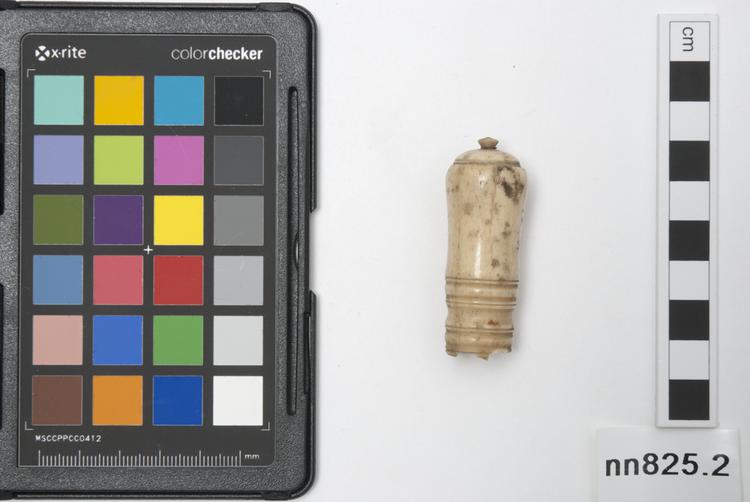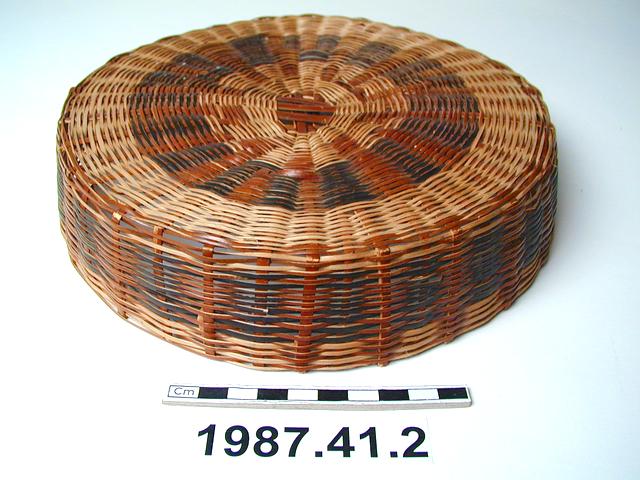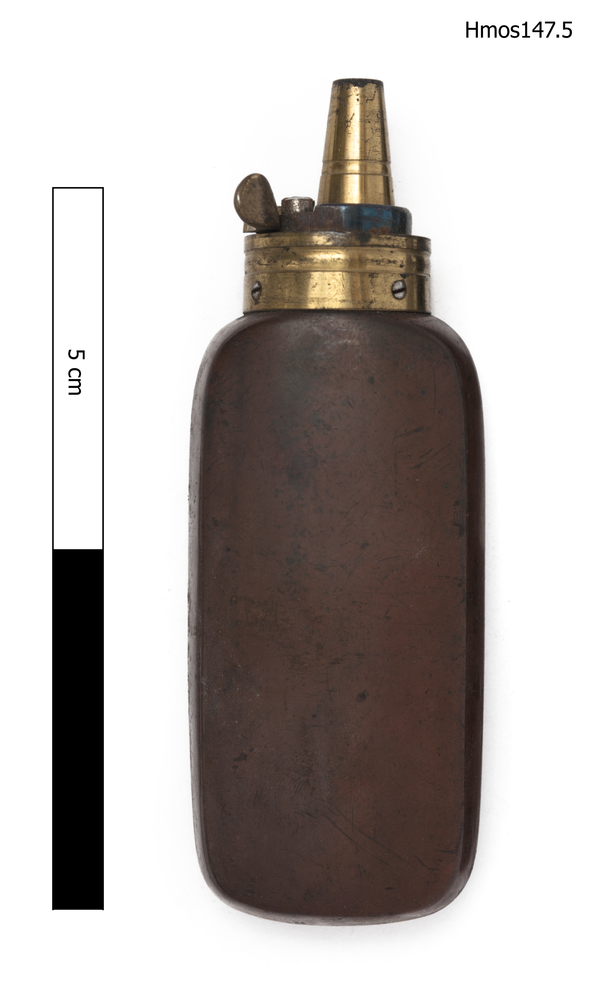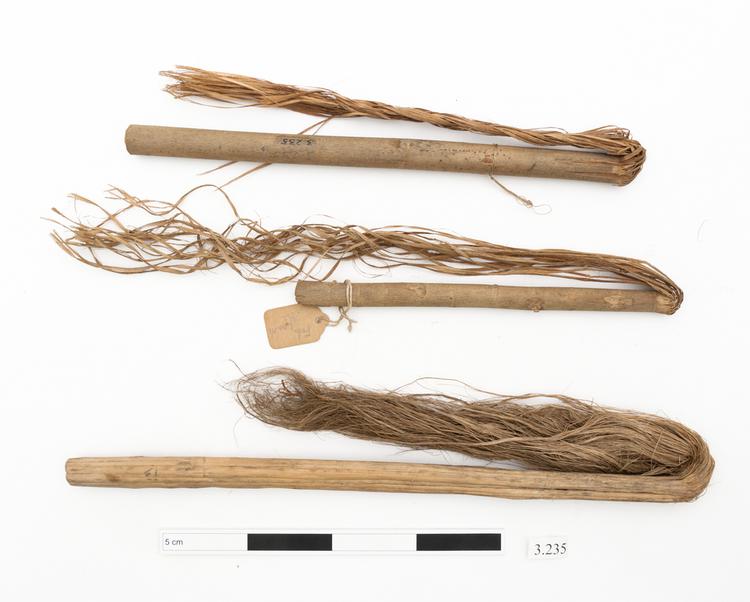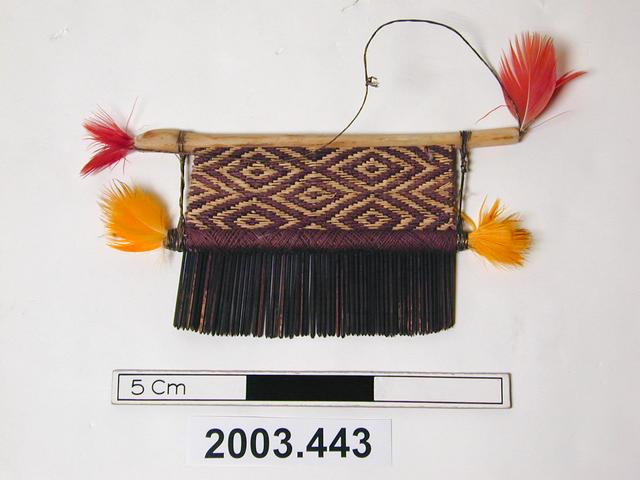
Wai Wai combs. Local name Wai-a-macasi. Purchased from the Amerindian shop in Georgetown. The Wai Wai combs are renowned for being highly ornamental and expertly crafted pieces of art. The combs are normally made out of various materials. The usual materials will constitute two thin bones; one at the top and the other one in the middle. The bones are obtained either from monkeys or other animals found in the Wai Wai environment; the bones in these combs come from a bird known as fishka. The bones are separated by beautiful woven patterns (in the forms of zigzags or anaconda) below that will be the teeth of the comb. The 'teeth' of the comb could be made from different types of materials ranging from animal bones to wood. The teeth of these two combs come from the branches of a tree locally known as Com-o-cahu or Quana Mari. The two bone frameworks are decorated with the insertion of little feather tassels. These particular combs are cruder than the earlier Wai Wai combs in the Horniman collection. This could be attributable to the fact that these combs are now made for 'tourist' consumption and maybe because the knowledge of making such 'traditional' crafts is diminishing due to modern influences and changes. These combs were made in Cashew Island, New River Area, Southern Guyana. They were made by men but used by all sexes and age groups. The top part of the comb is a cream-coloured bone with red feathers attached to each end. Below this is a flat woven part, with a repeated pattern of concentric diamonds, alternately of cream fibre and of purplish-brown thread. The bottom of the weaving is anchored to another, shorter bone, wrapped in the brown thread, with shorter yellow feathers at each end. Beneath this is the row of the comb's teeth, made of very fine dark-coloured cane or wood, very closely set together. On both the outside edges of the comb there is a fine but very tough strand of fibre running vertically between the two horizontal bones.



